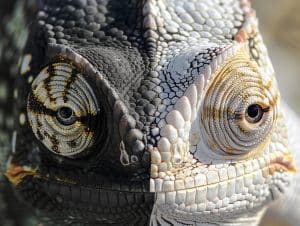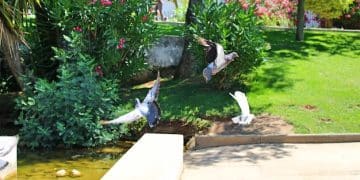Reptilian Shedding Behavior: Unveiling Health Insights in 2025


When it comes to reptile care, nothing is more telling than Reptilian Shedding Behavior. This natural process, often overlooked, acts as a mirror reflecting the internal health of your scaly companion.
The way a reptile sheds, how frequently, how completely, and how easily—can uncover crucial clues about hydration, nutrition, and environmental balance.
In 2025, advances in reptile health monitoring emphasize shedding as a powerful non-verbal signal. Learning to recognize and interpret these signals ensures not only your reptile’s comfort but also its longevity.
🧬 Understanding the Basics of Reptilian Shedding Behavior
Reptilian Shedding Behavior, also known as ecdysis, is a vital biological process in which reptiles regularly shed their outer layer of skin.
Far beyond being a surface change, this natural behavior plays a central role in maintaining the animal’s overall health.
By observing how and when your reptile sheds, you can gather valuable insights into its hydration status, nutrition, immune function, and environmental conditions.
Unlike mammals, reptiles have skin that does not grow with them. As the reptile grows, the outer layer of skin becomes tight and must be replaced with a new one that accommodates the animal’s increased size.
This replacement process happens multiple times throughout their lives, especially during the early stages of development.
Reptiles also rely on shedding to heal minor wounds. Damaged skin is removed during the process, allowing new tissue to form and protecting against infection.
In addition, Reptilian Shedding Behavior helps eliminate external parasites such as mites and ticks that might otherwise harm the animal.
🐍 Why Do Reptiles Shed?
There are three main purposes behind Reptilian Shedding Behavior, each directly tied to the reptile’s physical needs and well-being:
🔹 Growth and Development
Shedding enables reptiles to expand into a larger body. As their rigid skin does not stretch, removing the old layer is necessary for physical development.
🔹 Wound Healing and Skin Renewal
When a reptile sheds, it sloughs off any damaged or dead skin, allowing new, healthy layers to emerge. This supports faster healing and helps maintain skin integrity.
🔹 Parasite Removal
Ectoparasites, like mites or ticks, can attach to the outer skin. Shedding helps dislodge and eliminate these pests, acting as a natural cleansing process.
The frequency and appearance of shedding vary greatly based on species, age, diet, habitat humidity, and overall health. For example, young reptiles may shed monthly due to rapid growth, while older ones shed less frequently.
Monitoring your pet’s Reptilian Shedding Behavior allows you to detect early warning signs of improper care. Dry patches, incomplete sheds, or stuck skin around the eyes or tail can all signal an imbalance that requires immediate attention.
Shedding is more than just a routine occurrence. It is a direct reflection of your reptile’s health and must be consistently observed as part of proper husbandry.
By understanding the biological importance and underlying factors that influence shedding, reptile owners are better equipped to provide environments that support clean, complete, and stress-free sheds.
Ultimately, consistent and healthy Reptilian Shedding Behavior is one of the most visible signs that your reptile is thriving.
🌡️ Factors Influencing Shedding Frequency in Reptilian Shedding Behavior
The frequency of Reptilian Shedding Behavior is not random. It is shaped by a variety of biological and environmental factors, each playing a vital role in how often a reptile will shed.
By understanding these influences, reptile owners can better predict shedding cycles and identify when something may be off.
A healthy shed depends on the reptile’s age, its rate of growth, the humidity and temperature of its enclosure, and even its diet and hydration habits.
Any imbalance in these elements can disrupt the natural shedding rhythm, leading to incomplete or irregular skin loss.
🐣 Age and Growth Rate
Young reptiles are in a constant state of development, which means they shed far more often than adults. Their skin quickly becomes too tight as they grow, requiring frequent replacement.
As reptiles mature, their growth slows down significantly. This leads to fewer shedding cycles, often just a few times a year, depending on the species.
Shedding frequency is highest during juvenile stages and declines gradually with age.
🌿 Environmental Conditions
🌡️ Temperature Regulation
Reptiles are ectothermic, meaning their internal processes are affected by the environment. If the enclosure is too cold, metabolic rates slow down, and shedding may be delayed or incomplete.
A stable thermal gradient is essential for digestion, hydration, and proper skin turnover.
💧 Humidity Levels
Humidity plays a crucial role in softening and loosening the old skin layer. Low humidity is one of the leading causes of dysecdysis, or retained shed.
Conversely, excessively high humidity can encourage fungal growth or skin infections.
Make sure to:
- Use a digital hygrometer to monitor humidity.
- Adjust moisture levels based on the species-specific requirements.
- Provide a humid hide or misting area to facilitate the shedding process.
🍎 Nutrition and External Factors
A poor or imbalanced diet can affect skin elasticity and hydration, both of which influence how easily the skin separates from the body. Vitamin deficiencies, particularly in Vitamin A, are common culprits in problematic shedding.
External stressors, such as frequent handling, changes in light cycles, or poor hygiene in the enclosure, can also interfere with normal Reptilian Shedding Behavior.
Proper hydration, a balanced diet, and a clean environment are non-negotiable elements for a consistent and healthy shedding pattern.
🧬 Shedding Variability by Species
Each reptile species has unique shedding characteristics. Some shed in a single, clean piece, while others naturally shed in multiple fragments.
This variation is normal and should only raise concern when combined with other signs like stuck skin, lethargy, or loss of appetite.
In summary, Reptilian Shedding Behavior is shaped by a dynamic mix of internal and external conditions.
Maintaining optimal care in each of these areas ensures that your reptile can shed properly and regularly, helping to prevent complications and ensuring long-term health.
⚠️ Potential Health Issues Indicated by Abnormal Reptilian Shedding Behavior
Abnormalities in Reptilian Shedding Behavior are often early warning signs that something is wrong with your reptile’s environment, nutrition, or health status.
When the shedding process becomes difficult, incomplete, or unusually delayed, it may indicate that your reptile is under stress or suffering from an underlying condition.
Recognizing these issues early allows you to intervene before more serious complications develop.
In a healthy reptile, shedding should occur smoothly and in response to normal biological needs.
However, when shedding becomes irregular or problematic, it usually points to poor husbandry, dehydration, low humidity, or more serious health problems such as infections or injuries.
🩹 Dysecdysis: When Shedding Goes Wrong
Dysecdysis is the medical term for difficult or incomplete shedding, and it’s one of the most common complications observed in captive reptiles.
This condition occurs when the outer skin layer fails to separate and fall away as it should. Instead, pieces of dead skin remain stuck to the body, especially around sensitive areas like the eyes, toes, and tail tip.
These retained patches can cause severe discomfort and even restrict blood circulation, leading to pain, swelling, and long-term tissue damage.
Dysecdysis is frequently associated with low humidity in the enclosure, inadequate hydration, and poor nutrition—especially deficiencies in vitamin A.
These factors affect skin elasticity and moisture, making it harder for the skin to lift and peel away properly.
If not addressed promptly, dysecdysis can result in more serious complications, such as necrosis, bacterial infections, or loss of digits and tail tips.
While mild cases can often be treated at home through increased humidity and soaking, severe or persistent dysecdysis requires veterinary evaluation to rule out infection or organ dysfunction that might be interfering with the natural shedding cycle.
🧫 Skin Infections and Physical Trauma That Disrupt Shedding
Infections and physical injuries can significantly disrupt normal Reptilian Shedding Behavior, often leading to irregular, patchy, or prolonged sheds.
Bacterial and fungal infections are common in reptiles kept in unsanitary or overly humid enclosures. These infections can weaken the skin, making it more difficult to shed properly and increasing the risk of retained skin or inflammation.
Likewise, burns from heat lamps, abrasions from sharp decor, or untreated cuts can interfere with the shedding process.
Injured skin may shed unevenly or not at all, leading to visible rough patches, discoloration, and even open wounds if peeling is forced. In these cases, the affected area must be treated carefully to prevent secondary infections and support healing.
If your reptile displays swelling, redness, foul odors, or behavioral changes such as lethargy or loss of appetite after shedding attempts, it is essential to seek veterinary care.
These symptoms often point to deeper issues that cannot be resolved through basic husbandry adjustments alone.
🛠️ How to Prevent and Correct Abnormal Reptilian Shedding Behavior
The good news is that many cases of abnormal shedding can be resolved by improving basic husbandry practices. One of the most effective strategies is maintaining ideal humidity levels appropriate to your reptile’s species.
Regular misting, soaking opportunities, and the inclusion of humid hides can help loosen the old skin and support smoother ecdysis.
In addition to environmental control, providing a balanced diet rich in vitamins A and E, along with proper calcium levels, is essential for promoting healthy skin and overall resilience.
Hydration is also critical, offering fresh, clean water daily and encouraging water intake through misting or water-rich food items will ensure that your reptile’s skin remains supple and shed-ready.
Always monitor your reptile closely during shedding cycles. If you notice retained patches of skin, take gentle steps to assist with humidity or soaking, but never peel skin off manually, as this can damage the new layer underneath.
In persistent or severe cases, do not hesitate to contact a reptile veterinarian. Timely professional care can prevent long-term harm and restore normal Reptilian Shedding Behavior.
By being proactive and observant, you can ensure your reptile remains healthy, comfortable, and free from the risks associated with abnormal shedding.
🏡 Adjusting Husbandry to Promote Healthy Reptilian Shedding Behavior

Proper husbandry is one of the most important factors in supporting consistent and healthy Reptilian Shedding Behavior.
When the reptile’s habitat mimics its natural environment in terms of humidity, temperature, hydration, and enclosure layout, the shedding process becomes smoother and less prone to complications.
Reptiles rely on external conditions to regulate bodily functions, including skin renewal. Small imbalances in enclosure care can quickly result in dry sheds, retained patches, or infections.
That’s why environmental management should be a routine part of your reptile care checklist.
💧 Humidity and Enclosure Setup
Humidity directly impacts the skin’s ability to lift and separate. Low humidity often leads to stuck shed, especially around delicate areas like toes and eyes. Use a hygrometer to monitor levels and adjust with:
- Regular misting or a fogger
- A large water dish for passive evaporation
- A humid hide with damp moss or paper towels
Also, include rough, safe surfaces like cork bark, logs, or textured rocks so your reptile can naturally rub off old skin.
🛁 Soaking and Hydration
Good hydration supports elastic skin and easier shedding. Provide clean, fresh water daily and consider shallow soaks during shedding periods. Misting also helps reptiles that prefer to drink water droplets.
🔁 Maintain Consistency
Daily maintenance is essential. Clean the enclosure regularly, monitor for behavioral changes, and adjust care based on your reptile’s current condition.
By optimizing humidity, hydration, and enclosure design, you create the ideal environment for smooth and complete Reptilian Shedding Behavior, reducing the risk of retained skin and related health problems.
🥦 The Role of Nutrition and Hydration in Reptilian Shedding Behavior
Healthy Reptilian Shedding Behavior depends not only on environmental conditions but also on what your reptile consumes.
Proper nutrition and hydration directly impact the skin’s strength, elasticity, and ability to shed cleanly.
Without a well-balanced diet and consistent access to water, even reptiles in ideal enclosures can experience dry, incomplete, or irregular sheds.
Shedding is a demanding process on the reptile’s body. Skin regeneration requires vitamins, minerals, and proper hydration to function efficiently.
Nutritional deficiencies or dehydration will quickly show up as dull skin, stuck shed, or shedding delays.
🍎 Nutrition and Skin Health
A balanced, species-appropriate diet is essential to maintaining healthy skin and supporting consistent Reptilian Shedding Behavior.
Reptiles need the right mix of protein, calcium, vitamins (especially A and E), and trace minerals to regenerate skin properly.
When these nutrients are missing or imbalanced, the skin becomes dry, flaky, and prone to complications. Over time, this can result in chronic shedding problems that no amount of misting alone can fix.
It’s important to consult a reptile veterinarian or experienced keeper to tailor a diet that fits your reptile’s specific needs, especially if you begin to notice repeated shedding issues.
💧 Hydration Strategies That Support Shedding
Hydration is just as vital. Many reptiles, particularly those in arid environments, have a weak thirst drive and won’t drink from a bowl.
This makes it important to encourage hydration indirectly by misting the enclosure and offering water-rich foods.
To maintain proper hydration and promote healthy Reptilian Shedding Behavior:
- Provide a shallow, clean water bowl that is easy to access
- Mist the enclosure regularly to keep humidity at optimal levels
- Offer occasional warm water soaks, especially when shedding begins
These small adjustments help keep the skin supple, making it easier for the outer layer to separate and shed naturally.
Failing to meet hydration or dietary needs can lead to persistent shedding problems and long-term health consequences.
By combining proper nutrition with daily hydration strategies, you can significantly improve the consistency and quality of your reptile’s Reptilian Shedding Behavior.
| Key Point | Brief Description |
|---|---|
| ✨ Shedding Frequency | Varies by age, species, and environment. Young reptiles shed more often. |
| 💧 Humidity | Essential for healthy shedding; too low can cause dysecdysis. |
| 🍎 Nutrition | A balanced diet supports healthy skin and shedding. |
| 🩺 Vet Check | Consult a vet for abnormal shedding or skin issues. |
Frequently Asked Questions (FAQ)
▼
Shedding frequency relies greatly on species and age. Younger, faster growing reptiles may shed once a month. Older reptiles may only shed a few times a year, or even less depending on the species.
▼
Lack of humidity is a primary component. Dehydration can lead to problems too. Consult a herpetoculturist to help identify issues.
▼
Yes, you can offer lukewarm soaks or gently mist its enclosure. However, never try to forcibly peel the skin off, as this can damage the new skin underneath.
▼
Try gently increasing humidity and seeing if that helps. If the skin does not come off on its own, consult a vet as damage to the eye can be caused.
▼
If shedding issues persist despite husbandry adjustments, it’s best to consult a reptile veterinarian. They can determine if there are underlying health issues contributing to the problem.
🧠 Final Thoughts on Reptilian Shedding Behavior
Understanding and monitoring Reptilian Shedding Behavior is essential for any reptile owner who wants to ensure their pet’s health and well-being.
Far more than a simple skin change, shedding reveals important clues about hydration, nutrition, environment, and even emotional stress. By learning to read these signs, you gain a powerful tool for preventive care.
A consistent, clean shed with vibrant post-shed skin and clear eyes is a sign of strong internal balance.
On the other hand, irregular or incomplete shedding can point to serious underlying issues such as dysecdysis, poor nutrition, or improper humidity levels.
Addressing these factors early helps avoid complications like infections or constricted limbs.
To promote healthy Reptilian Shedding Behavior, it’s vital to maintain:
- Optimal humidity using misting, soaking, and proper enclosure design
- Balanced nutrition tailored to the species’ needs
- Proper hydration, even for reptiles that don’t actively drink
- Safe and enriched habitats that allow natural shedding mechanisms
- Close observation for early detection of abnormal patterns
By giving consistent attention to these areas, you not only support your reptile’s comfort but also enhance its longevity and quality of life.
For additional guidance, expert care tips, and detailed visuals about Reptilian Shedding Behavior, explore as well:
These trusted sources provide valuable information to help you recognize warning signs, fine-tune your care routine, and optimize your reptile’s environment for safe, natural shedding.
By staying informed and attentive, you empower yourself to master the care of Reptilian Shedding Behavior and ensure your reptile thrives—shed after shed.
Liked the article?






